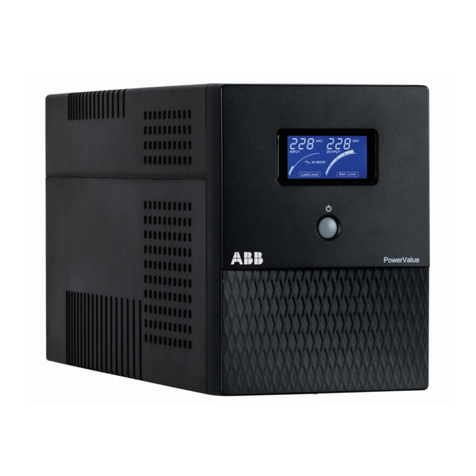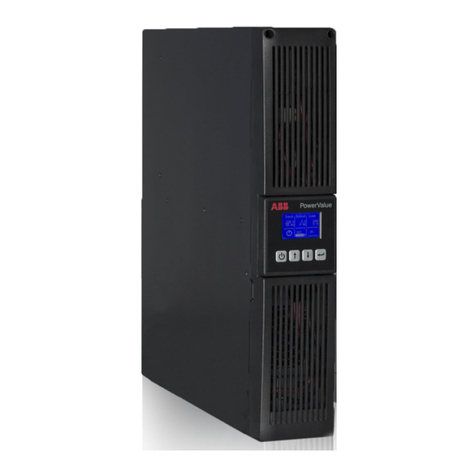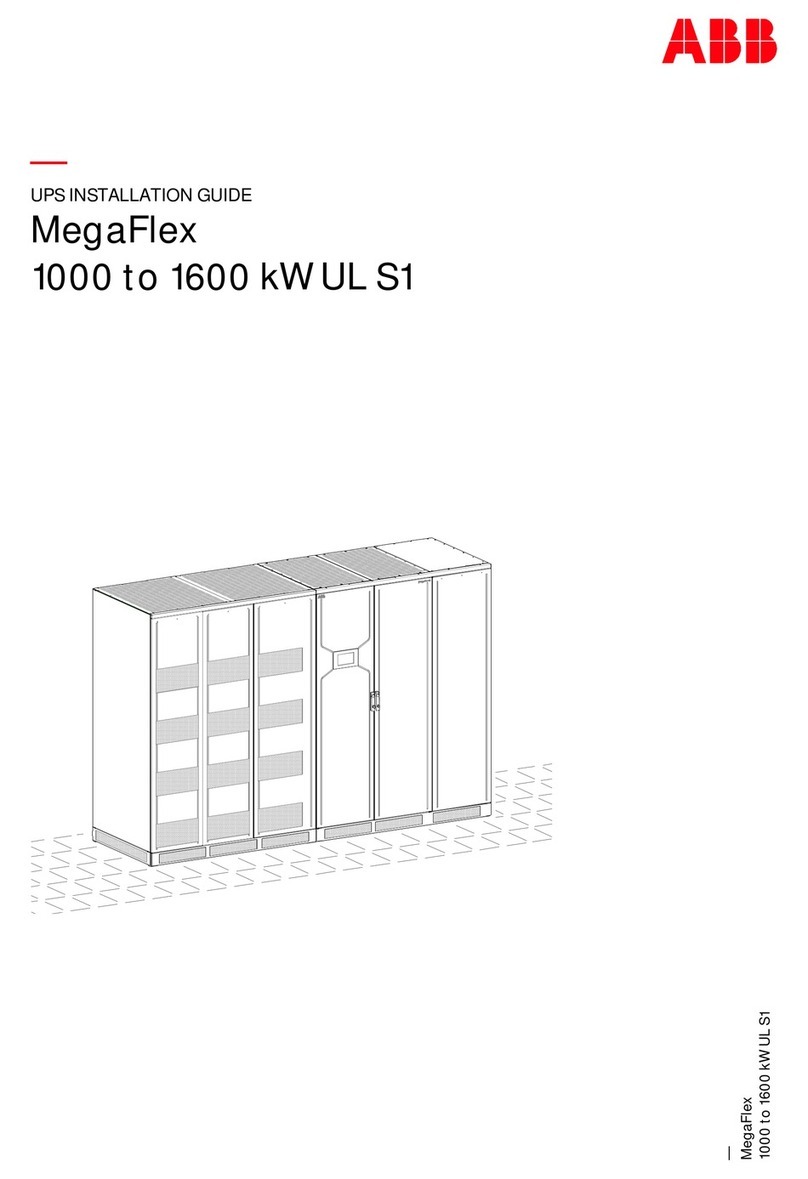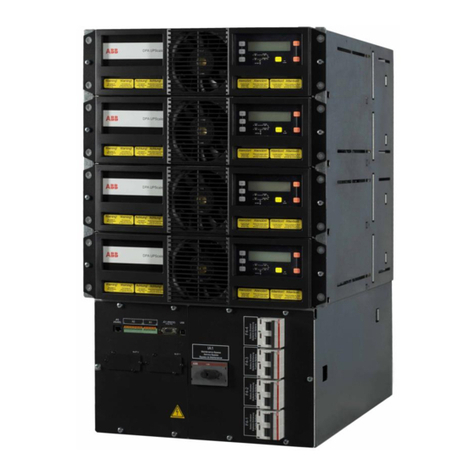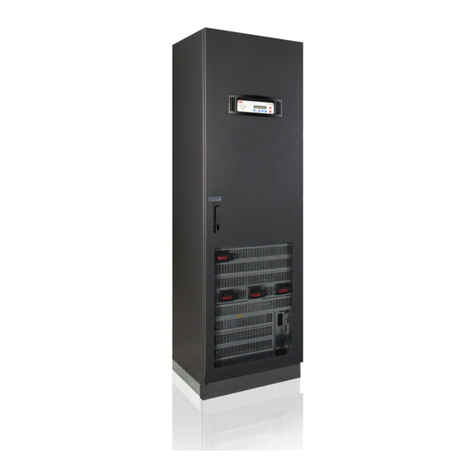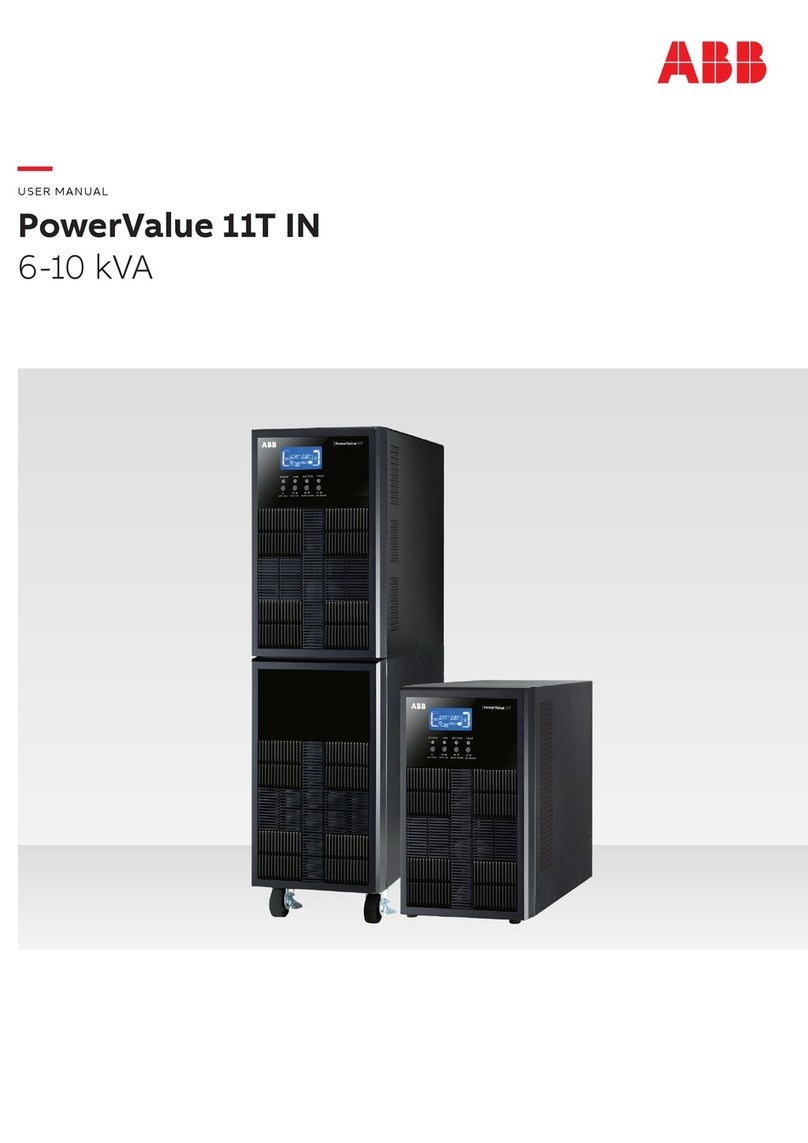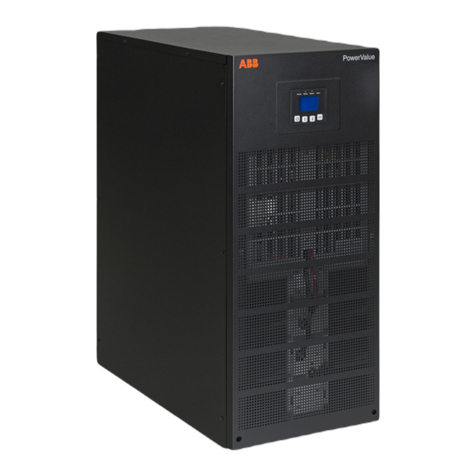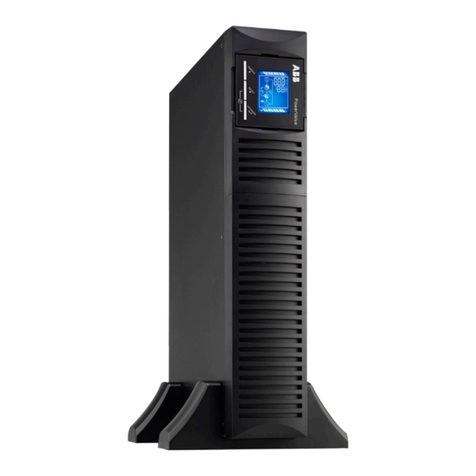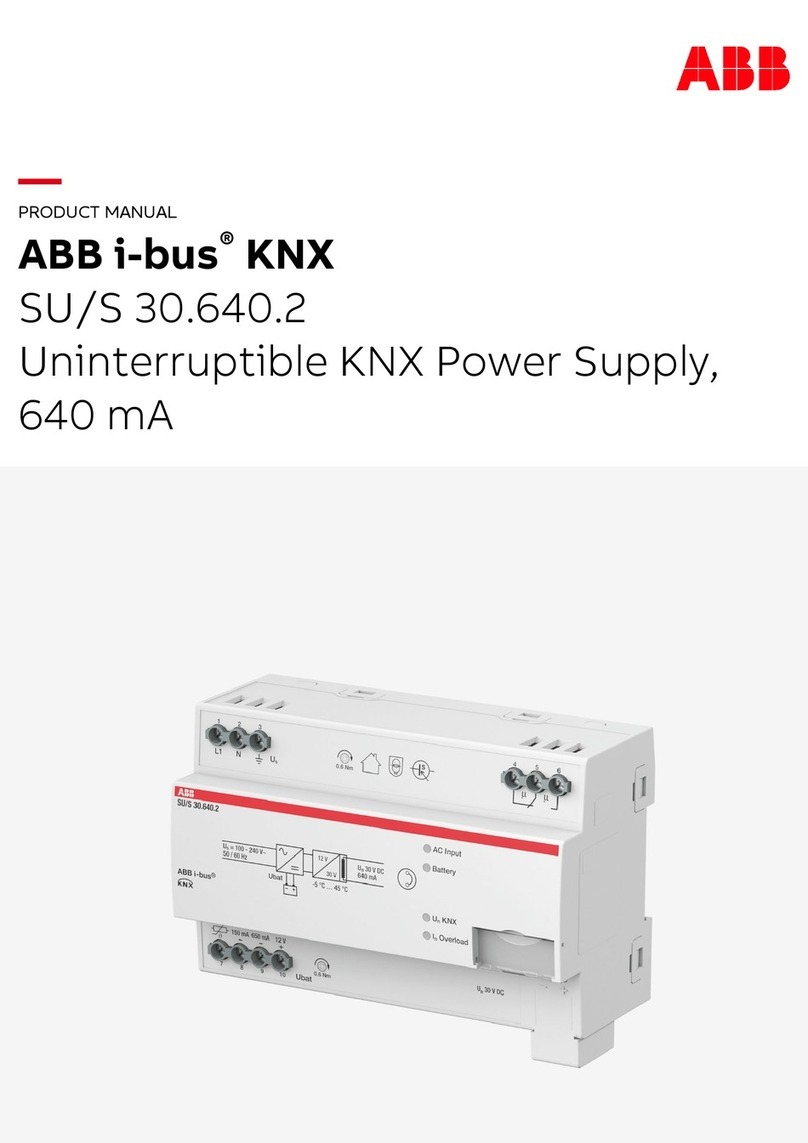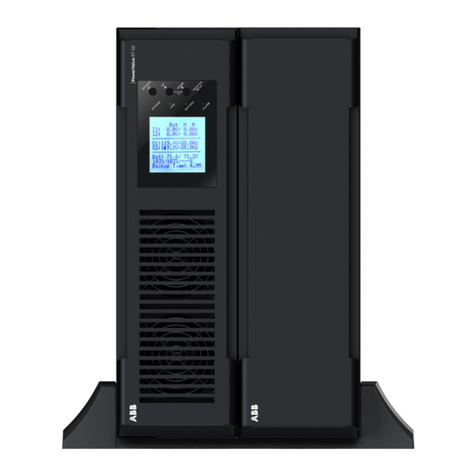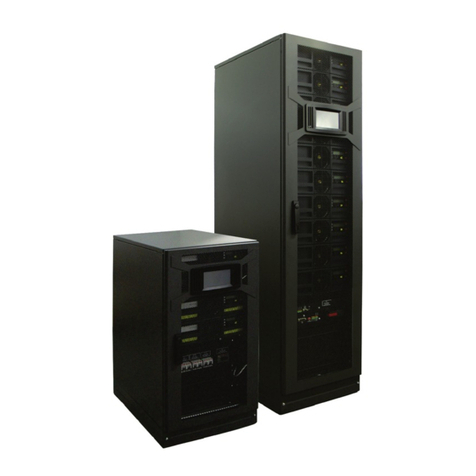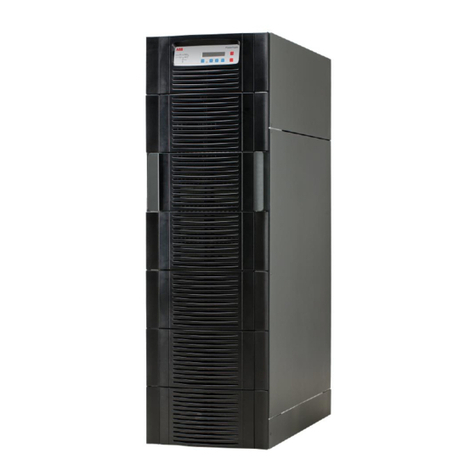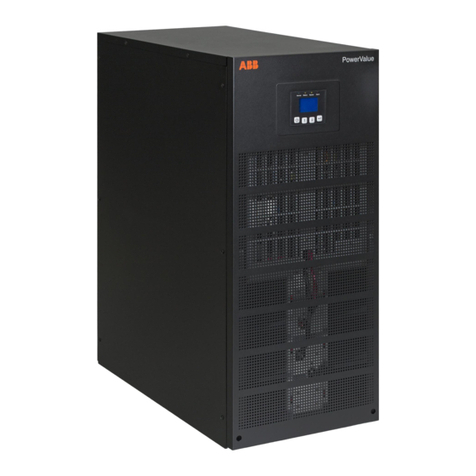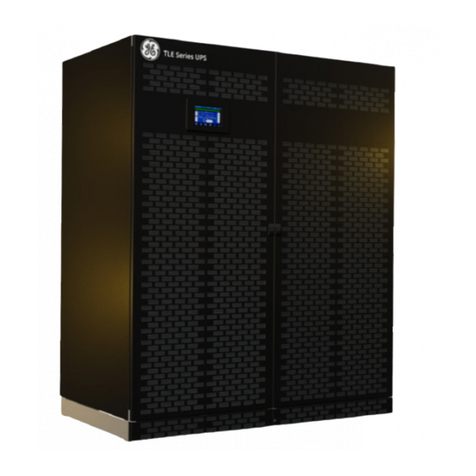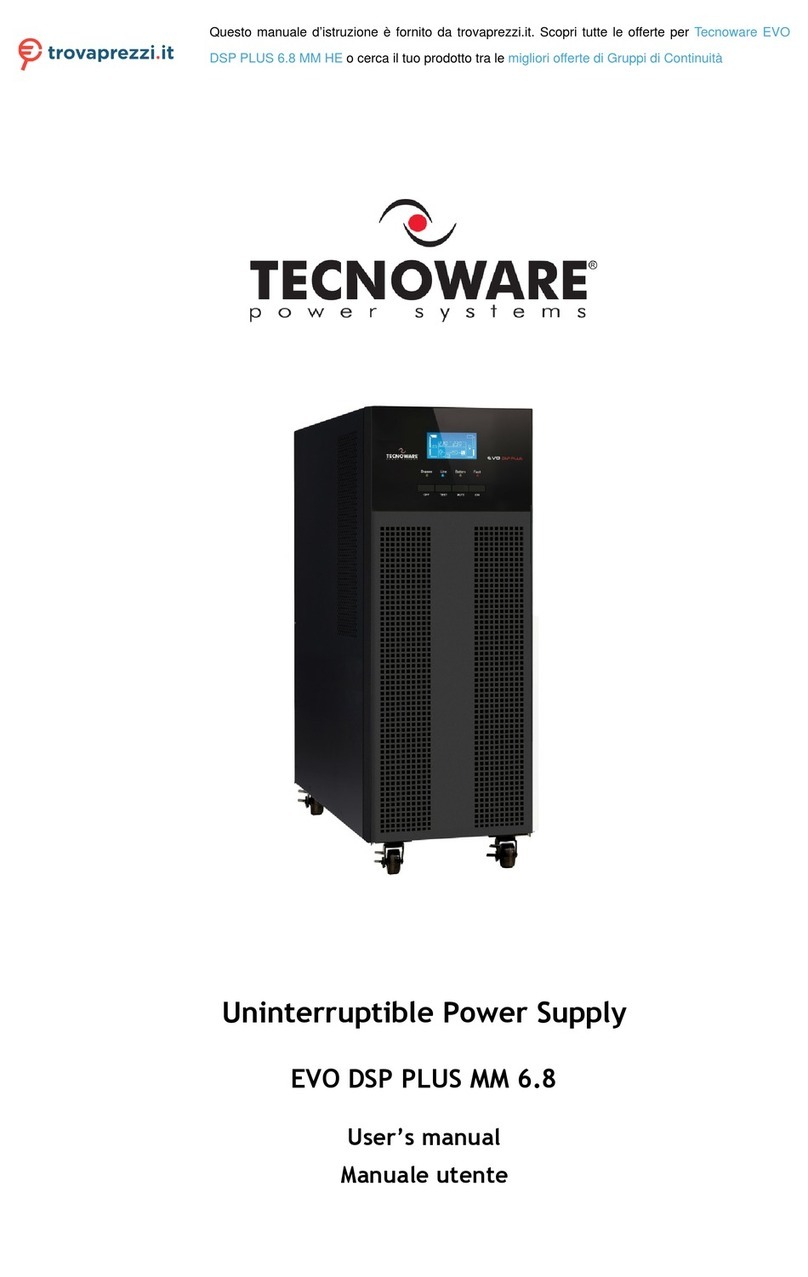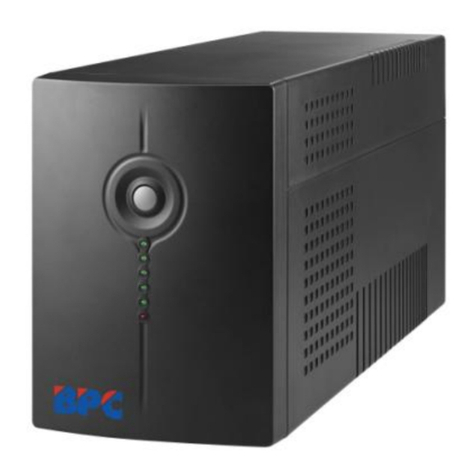
10 POWERVALUE 11 RT G2 IN — 6-10 KVA
—
3. Installation
3 .1 Delivery, transportation,
positioning and storage
3 .1 .1 Receipt of the UPS and visual inspection
When receiving the UPS, carefully examine the
packing container and the UPS for any signs of
physical damage. In case of damage, notify the
carrier immediately.
The packing container of the UPS protects it from
mechanical and environmental damage.
To increase protection, the UPS is wrapped in a
plastic sheet. Keep the packaging for later re-use.
3 .1 .2 Unpacking list
After examining the package, open the box and
check the following items are included:
• 1 x PowerValue 11 RT G2 IN UPS
• 1 x user manual
• 2 x UPS stands (support)
• 4 x M4 round screw (UPS stands)
• EPO contactor
• Dry contactor
• 1 x OVCD Box
• 1 x USB flash driver
• 1 x 15-pin communication cable
(for parallel systems)
• RS232 cable
• 1 x USB cable
Rack-mounting accessories (full rack-mounting
kit can be purchased separately):
• 2 x 90° rack mounting brackets
• 4 x M6 clip nuts
• 12 x M6 screws
• 4 x M4 screws
Examine the UPS for any signs of damage and
ensure that the received UPS corresponds to the
material indicated in the delivery note. Notify
your carrier or supplier immediately in case of
any damage.
3.1.3 Storage of UPS
If you plan to store the UPS prior to use, keep it
in a dry, clean and cool storage room with an
ambient temperature between -15°C to +60°C
and humidity of less than 95 percent
(non-condensing). If the packing container has
been removed, protect the UPS from dust.
Always keep the UPS in an upright position and
do not drop.
3.2 Site planning and positioning
3.2.1 Planning before the installation
To ensure a long service life, install the unit
in a position where any danger to the UPS
is minimized:
• Install the UPS indoors.
• Leave 50 cm of space on each side of the
cabinet to allow cooling airflow and ensure
that the circulation of air to the ventilation
slits is not obstructed.
• Avoid excessively high temperatures and
excessive moisture.
• Make sure that the surface is solid and flat.
3.2.2 Positioning
PowerValue 11 RT G2 IN can be mounted in a rack
or installed in a standalone configuration.
WARNING!
Water condensation may occur if
the UPS is unpacked in a very low
temperature. To avoid hazards and
risk of electric shock, wait until
the UPS is fully dry both inside and
outside before installing / using the
UPS.

